The April Full Moon will rise on the night of April 7. It will be a spectacular full moon and will reach the peak of illumination at 10:35 P.M. EDT. Because it will miss the perigee only by 8 hours, it will be the biggest Supermoon of the year.
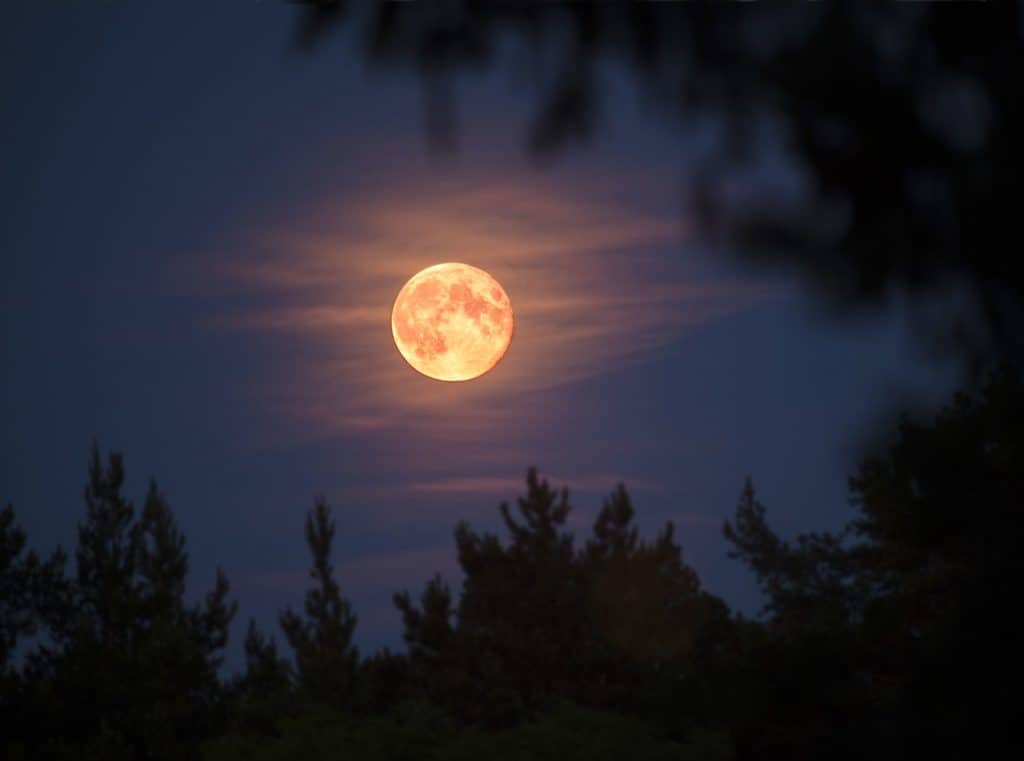
Traditionally, the April Full Moon is called the Pink Moon, but there are slim chances that this incredible Moon will appear pink. Let’s see from where April’s Full Moon got its name, what it means, and discover its phases.
The Other Names of the April Full Moon
Traditionally, Native American and European tribes used the full moon names from ancient times to track seasons. They have a close relation with nature.
Even though its most common name is the Pink Moon, it has nothing to do with the color. April’s Full Moon got the name Pink after the spring flowers that bloom at this time of the year. It most likely corresponds with a certain wildflower native in North America known as moss pink or creeping phlox.
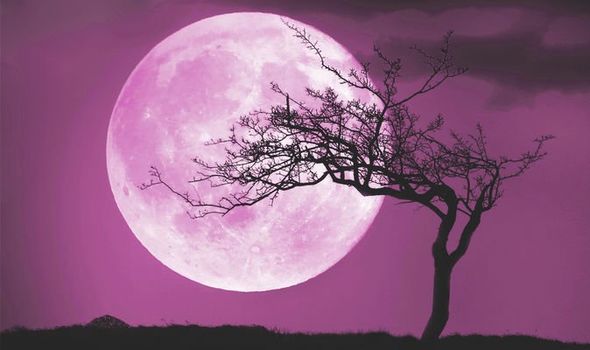
Each Full Moon name is applied for the entire lunar month, not just for the Full Moon itself. Other names for the April Full Moon are Sprouting Grass Moon, Egg Moon, Fish Moon, Harvest Moon, Hunter’s Moon, Blood Moon.
Some other Native American tribes called it the Breaking Ice Moon, Broken Snowshoe Moon, Budding Moon of Plants and Shrubs, Frog Moon, Seed Moon, or Sugar Maker Moon, among many others.
The Spiritual Meaning of the Pink Moon
After a cold and stormy winter, it is time for renewal, for joy, warmth, and beauty. The Pink Moon perfectly symbolizes that. It is a reminder for us that life is a cycle of hibernation and awakening. Winter will always be a part of our lives, but it will always leave space for the beauty of spring. It is time you start to see life in brightened colors.
The spiritualists believe that this Pink Moon will bring security and hope, and the recent changes in your life will be permanent improvements.
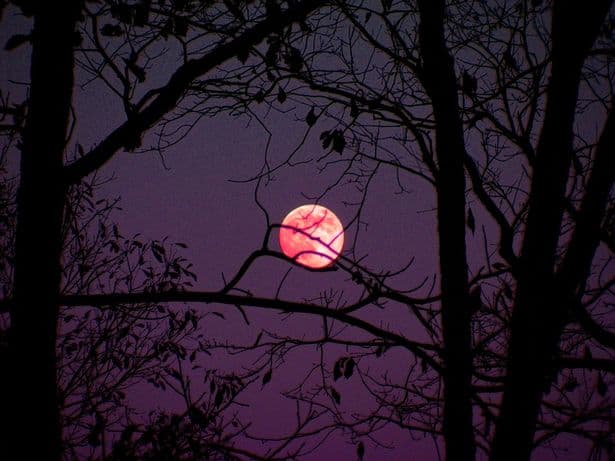
Astrologically, the Pink Moon will occur in Scorpio and the New Moon in Aries. Because Mars rules both signs, the most passionate and aggressive planet, this Pink Moon has incredible power. If you consider a reorganization of your life or make changes in your habits, now it’s a perfect time. Use this immense energy to improve yourself and trust in those changes because they will stick a long time with you.
Moon phases for April 2020
April will start on a Wednesday, and the Moon will be at First Quarter until next night. On the 1st of April, the Moon visibility will be at 51% and increasing.
From the 3rd of April until the 6th, the Moon phase will be Waxing gibbous, which means its visibility will increase to 97%.
We will see the Full Moon of the month for the next two days, with 100% visibility. From the 9th of April, the Moon starts the Waning gibbous phase. It will last until the 13th, and its light will decrease.
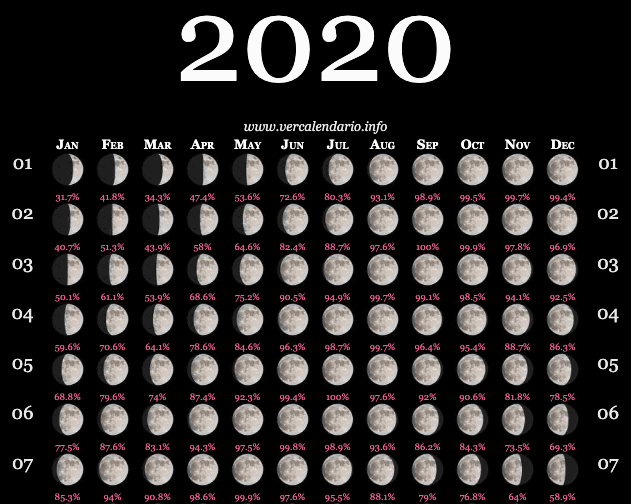
The Last Quarter will last four days until the 16th. The visibility will decrease to 35%. In the next phase, it’s the Waning crescent. Until the 20th of April, the visibility will drop to 7%.
The New Moon will last four nights, until the 24th. The minimum visibility will be at 0.35% on the third night. At this point, the Moon starts increasing its light. The Waxing crescent phase will end on the 28th, with the maximum visibility of 27%.
On the last two nights of April, the Moon will be at the First Quarter phase, and it will be 47% illuminated.
The Difference Between a Full Moon and a Supermoon
We can see a full moon when it is on the opposite side of the Earth from the Sun. When this happens, the Moon is completely illuminated and visible from Earth in its complete form.
A Super moon is not that different. The Moon orbits the Earth in an ellipse, which means at some point, the Moon’s center will move closer or farther from Earth. The closest point is called perigee, and the furthest point apogee.
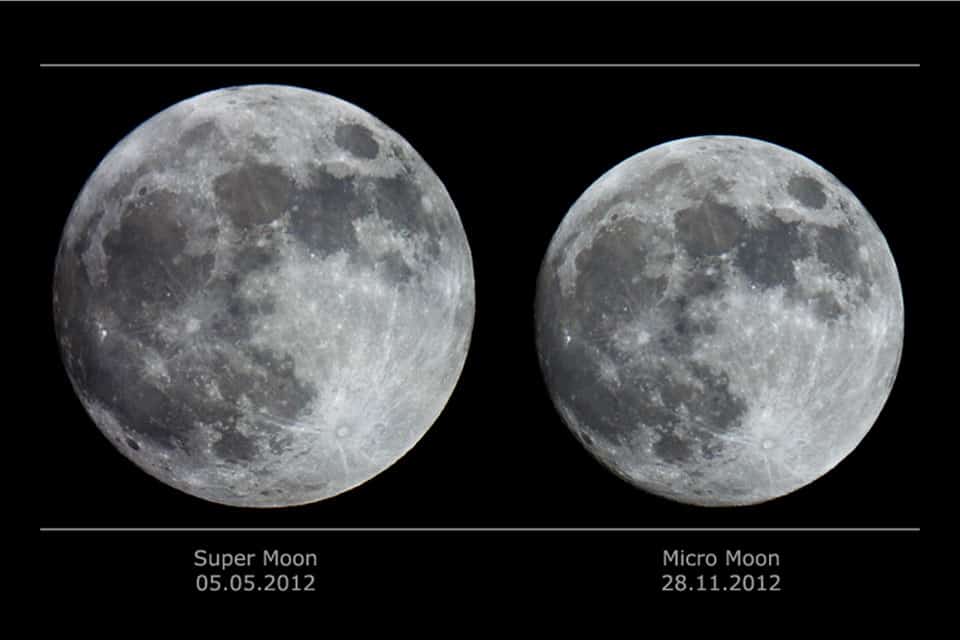
When the full Moon coincides or occurs near to perigee, a Supermoon occurs. It seems slightly bigger and brighter. Usually, the difference is so small it’s hard to notice it with the naked eye.
Is April’s Full Moon a Supermoon?
On the 7th of April, the Moon will be at its closest point to the Earth. The distance between our planet and the Moon will be 221,772 miles (356,907 kilometers). The Moon will turn full only 8 hours and 35 minuter later.
That’s why this Full Moon will not only be a regular supermoon, but it will be the biggest Supermoon of the year. Every Supermoon comes with stronger weather events and bigger ocean tides.
The Supermoon’s first name was Perigean Full Moon, and the astrologers and astronomers started to study them in the late ’70s.
What are the Full Moons of 2020?
In 2020 we have 13 full moons. Here are the dates and names:
- The full wolf moon – 10th of January
- The Full Snow Moon – 9th of February
- The full Worm moon – 9th of March
- The Full Pink Moon – 8th of April
- The Full Flower Moon – 7th of May
- The Full Strawberry Moon – 5th of June
- The Full Buck Moon – 5th of July
- The Full Sturgeon Moon – 3rd of August
- The Full Corn Moon – 2nd of September
- Full Hunter’s Moon – 1st of October
- The Full Blue Moon – 31st of October
- The Full Beavers’ Moon – 30th of November
- The Full Cold Moon – 30th of December
What are the Full Moons of 2021?
In 2021, we will have only twelve Full Moon’s. Here is when they will occur:
- 28th of January – Full Wolf Moon
- 27th of February – Full Snow moon
- 28th of March – Full worm moon
- 27th of April – Full Pink Moon
- 26th of May – Full Flower Moon
- 24th of June – Full Strawberry Moon
- 24th of July – Full Buck Moon
- 22nd of August – Full Sturgeon Moon
- 20th of September – Full Corn moon
- 10.20st of October – Full Hunter’s Moon
- 19th of November – Full Beaver Moon
- 19th of December – Full Cold Moon
Moon Phases
When the Sun, Moon, and the Earth are aligned, and the Sun illuminates only the part of the Moon we cannot see, the Moon is at its minimum visibility, and we call it the New Moon.
When the Moon, Earth, and the Sun are almost aligned with the Earth in the middle, we can see the Moon’s entire sunlit part. This is a Full Moon.
When the Moon is at 90 degrees angle concerning the Earth and the Sun, we can see half of the sunlit part and half of the shadow part. This is the First and Third Quarters, also known as the Half Moon.
![]()
Between these phases, we have the Waxing crescent phase, the Waxing gibbous, waning gibbous, and the Waning Crescent phase.
Waxing crescent happens after the New Moon when the Sun starts to illuminate the Moon, increasing its visibility, but less than half. When the Moon visibility increases with more than half, it’s called the Waxing gibbous phase.
The light starts decreasing after the full Moon, and when half of the Moon is covered in darkness, it’s called the Waning gibbous phase.
After the Third Quarter, light decreases until it fades completely. This is the Waning crescent phase of the Mood.
Did you Know?
- The most spectacular time to watch the Moon is at moonrise. If you look at the east while the Sun is setting, when the Moon is close to the horizon, it will look larger than the surroundings. Because of the Earth’s atmosphere, it will appear orange or yellow for a couple of minutes.
- The International Astronomical Union has not yet defined the Supermoon term, which raises a lot of debate amongst astronomers. For instance, February’s Full Moon was considered by some as the first Supermoon of the year. Others considered the time between the perigee and the peak of February’s Full Moon was too much. It missed the perigee one and a half days.
- Every year, Easter is celebrated on Sunday following this Pink Moon, also known as Paschal Full Moon.
Sources:
Image Sources:
- https://www.coveragelog.com/wp-content/uploads/2020/04/full-moon-royalty-free-image-1585338522-1024×761.jpg
- https://cdn.images.express.co.uk/img/dynamic/151/590x/Pink-Moon-2019-meaning-why-April-Full-Moon-called-Pink-Moon-explained-1114965.jpg?r=1555663633496
- https://sunrisenews.co/wp-content/uploads/2018/04/The-pink-moon.jpg
- https://i.pinimg.com/originals/66/e1/2c/66e12cafd83f2bb95ea7df430c411bdc.png
- https://apod.nasa.gov/apod/image/1409/supermicromoon_paduraru_960.jpg
- https://www.almanac.com/sites/default/files/image_nodes/moon-phases_delpixel-ss-resize2.jpg
